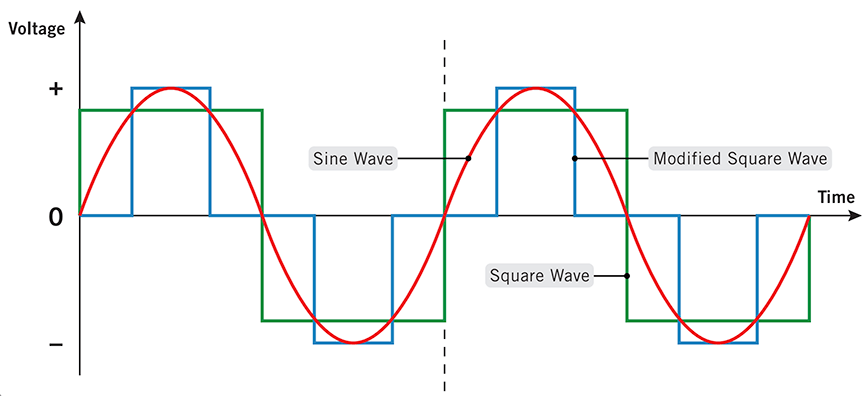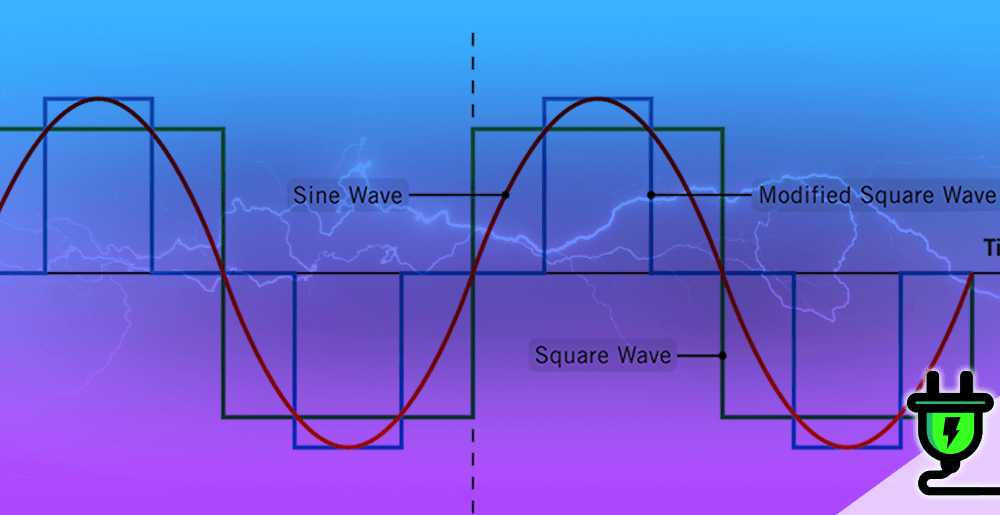Are you in the market for a portable inverter generator for your home electronics? If so, you may have come across the term “sine wave output.” But what is sine wave output, and is it something you need to worry about?
Sine wave output is a steady and continuous wave, that provides a smooth, periodic oscillation. Portable generators with sine wave output closely match the power provided by your utility company through the wall outlets.
Portable inverter generators with sine wave output, or pure sine wave output, are ideal for powering appliances and electronics. Because sine wave inverters transform direct current (DC) from a battery into an alternating current (AC), the power output is clean and continuous. In fact, it’s nearly identical to, or sometimes even better than the power supplied by your local utility company.
In this guide, we’ll explore the different types of sine wave output. We’ll start with a brief overview of the most common types of sine waves, then we’ll delve into why it’s the preferred output.
By the end of this guide, you’ll have a good understanding of what is sine wave output, the different types and how they can be used in different applications. Let’s dive into this!
What Are The Different Forms of Sine Wave Output?
Sine waves are a type of waveform that are often used in electronics. There are three different types of sine wave outputs: pure, modified, and square wave. Each type has its own unique benefits and drawbacks.

Knowing which type of output is right for you is essential when shopping for a portable generator. Let’s take a closer look at each type of sine wave output to help you decide which one is right for you.
Pure Sine Wave
Inverter generators with a pure sine wave output produce the type of power commonly seen from a wall outlet in your home. The advantage of this output is that its a smooth consistent flow of energy. Meaning, there are no fluctuations in power.
Electronic devices are particularly sensitive when it comes to power supply. For example, if the sine wave has any inconsistency or otherwise dirty, it could damage electronic devices due to excessive heat.
With that said, if you have any plans of powering a computer or other electronic devices and appliances using a portable inverter generator, choose one that produces a pure sine wave output. This will guarantee you can power any device and appliance safety.
Modified Sine Wave
An inverter generator that has a modified sine wave, outputs power in a waveform like a square. They simulate AC power inverted from DC batteries, and is considered slightly less efficient than a pure sine wave inverter.
Generally, an inverter that has a modified sine wave are often more affordable than their pure sine wave counterparts. As an example, consumer grade pure sine wave inverters typically cost between $175 and $945. However, modified sine wave inverters will typically cost between $65 and $700. As you see, a pretty big difference on price.
So if you need to power devices that do not require a consistent smooth flow of power, then a modified sine wave inverter may all you need.
Square Wave
Inverters that produce a square wave output are less efficient converting DC to AC power. In fact, electronic devices will either not work at all, or heat up when connected to a square wave inverter. It’s common to even hear a slight humming noise from a device when connected to this type of inverter.
But square wave inverters have their place in the world. They are great at providing power to devices that only have motors, and no electronics.
Overall, square wave inverters are the least expensive type of inverter, but it produces the lowest quality of power. In fact, square wave inverters have been found to be 75% to 85% less efficient when compared to pure sine inverters.
Why is Sine Wave Output the Preferred Inverter Output?
Electronic devices such as LED TVs and computers are particular sensitive to incoming power. Therefore, the safest portable power sources for your devices are those that offer a pure sine wave output.
Because these waves have minimal harmonics, it means they start up and run cooler when compared to modified or square wave outputs.
In fact, some equipment will not operate properly or at all if the power output is not pure sine wave. As an example, if you are trying to charge an electric car, most EV vehicles will not accept power from anything but a pure sine wave inverter. Tesla vehicles are one such example, because a power surge can be quite damaging to an EV vehicle.
The fact is, all modified sine wave and square wave inverters provide fluctuating output voltage that is ONLY suitable for powering certain devices or appliances.
Final Thoughts: What is Sine Wave Output
Hopefully, this guide has helped you understand the difference between square wave, modified wave and pure sine wave inverters.
Now that you know the importance of a pure sine wave output, be sure to keep it in mind when selecting your next portable inverter generator.






